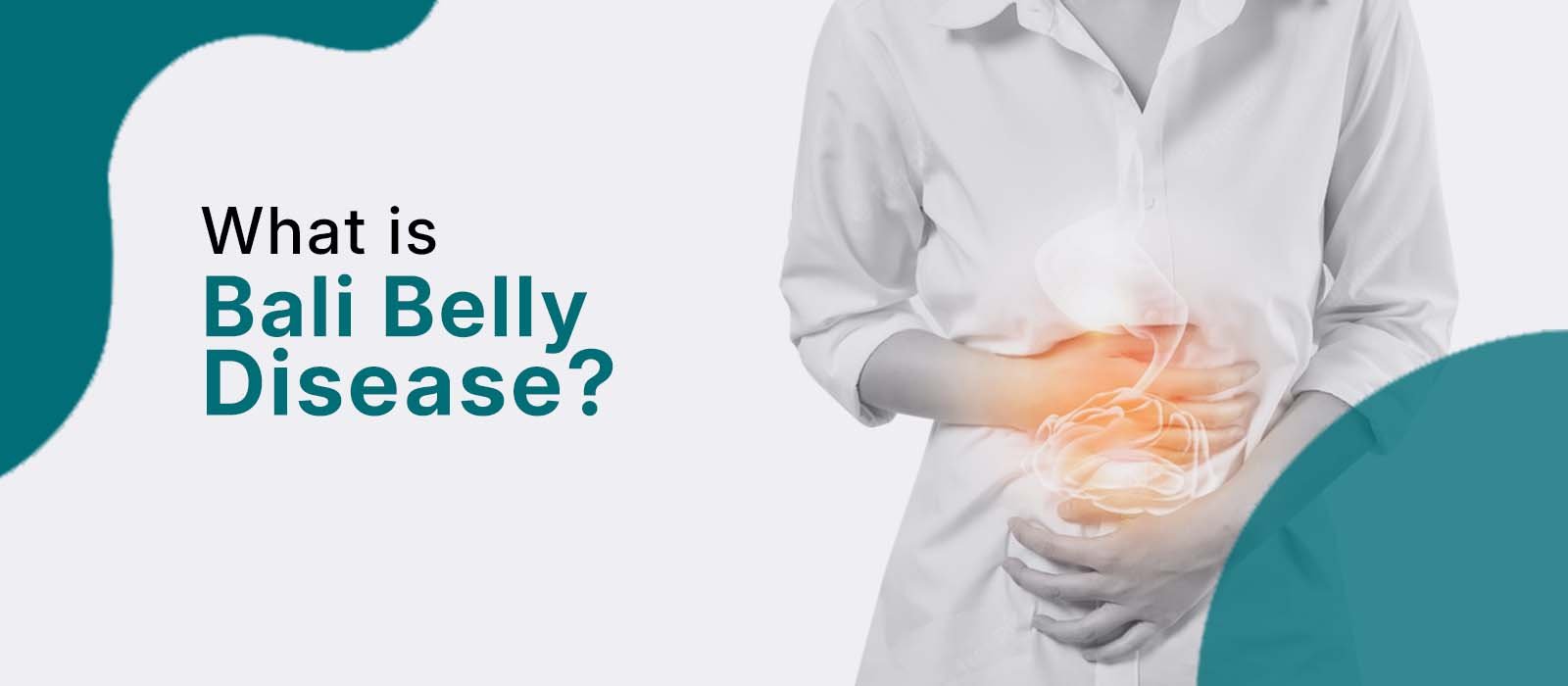
Bali Belly is a common digestive issue that targets a large number of tourists in Bali Indonesia. Also known as Traveler’s Diarrhea, It refers to gastroenteritis that results from drinking or eating food that is contaminated with several types of bacteria. While the condition often clears within a short period, it may be of mild discomfort with certain cases leading to levels where it causes more severe symptoms. In other words, the focus is that the Bali Belly can be extreme to the extent of how serious the precipitating factors are. How exactly does Bali Belly cause and what are its symptoms, treatment options, and preventive measures that will keep it at bay while enjoying a wonderful holiday?
Contents
What Causes Bali Belly?
Bali Belly is caused by ingestion of pathogens such as bacteria, viruses, or parasites, from unhygienic food and drink. Understandably, with the tropical nature of Bali and the food preparation industry receiving little attention regulation-wise, street foods, substandard cooking practices, and tainted potable water are the immediate contributing factors. Among the bacteria that cause gastroenteritis, Escherichia coli (E. Coli), Salmonella, and Shigella are some of the most common types. The involvement of two viruses, namely Norovirus and Rotavirus, is also often significant, especially when combining poor personal hygiene habits and improper food preparation.
Symptoms of Bali Belly
The manifestation of Bali Belly’s symptoms normally takes only one or two days and can come in various degrees of severity. Below are some usually found indications:
- – Diarrhea (often watery and frequent)
- – Abdominal cramps and bloating
- – Nausea and vomiting
- – Fever and chills
- – Fatigue or lethargy
- – Loss of appetite
- – Sweating and dehydration
It takes approximately 24 hours to a couple of days for these signs to stop. Severe cases of which there are many, give rise to dehydration and if not properly attended to can result in serious harm.
How Long Does Bali Belly Last?
Typically, if there is an uninvited bacteria or virus in your stomach, it takes Bali Belly to go away for 1 to 5 days. People who have contracted mild cases usually find that such problems disappear on their own in five days or less. On the five-day section, if any symptoms do not go away in one regard, or they get worse, one must consult a physician, especially if there is blood in the stool, or other signs of severe dehydration are present, such as lightheadedness or extremely low urine output.
Is Bali Belly Contagious?
Yes, Bali Belly can be contagious. Because Bali Belly is a common stomach issue. It can be passed from one individual to another because it is a sickness caused by unwanted bacteria, viruses, or parasites through direct contact or utensils. To avoid spreading Bali Belly to others, it is advised to observe basic cleanliness measures such as washing hands regularly, eating and drinking from one’s meals sharing no objects, and also using suitable hand wash to kill bacteria.
Bali Belly Treatment and Remedies
In the case that traveler’s diarrhea, also known as Bali Belly, is contracted, there are measures that can be taken for effective treatment and speeding recovery:
1. Hydration is Key
The essential strategy in taking care of Bali’s Belly is to ensure enough intake of water because it ensures the body is hydrated and supports the balance of essential minerals necessary for normal body functioning. As such, one may opt to drink plenty of fluids. The main ingredients in any first aid kit include Oral Rehydration Solutions. These solutions are highly recommended as they entail electrolyte replacement. Alternatively, if no ORS is available, there is a do-it-yourself treatment available of mixing a liter of potable water and 6 tsp sugar along with ½ tsp salt.
2. Over-the-Counter Medications
Antidiarrheal medications are a treatment that functions to manage the symptoms and yet should be used only when necessary. To minimize the effects of diseases like nausea and vomiting medications to control such symptoms from a pharmacist or a physician. A dose of pain relievers will help in reducing the fever and managing the body aches.
3. Dietary Adjustments
Eat plain meals that are easy on your digestion this includes the BRAT diet – bananas, rice, applesauce, and toast. But on the other hand, keep off foods that are fatty, as well as spicy ones. Such foods, if eaten, may worsen the situation. Accordingly, it would also be best if one kept off caffeinated drinks until the point of full recovery.
4. Natural Remedies
Some people also drink natural Bali Belly remedies like coconut water to replenish lost electrolytes. Good bacteria in the stomach can be replenished with locally available probiotic drinks like Yakult. There also appears to be some effect with raspberry cordial as it seems to be good for fighting off such ‘bad’ bacteria.
5. IV Therapy for Severe Cases
In Bali, doctors sometimes need to use intravenous solutions (IV Therapy for Bali belly) if the symptoms are severe and the oral rehydration doesn’t do much. During one’s stay in Bali, one can quickly restore body fluids and electrolyte balance, stop nausea, and relieve headache with intravenous therapy.’
How to Avoid Bali Belly
While it’s not always possible to prevent Bali Belly, here are a few precautionary measures that can greatly reduce your risk:
- Consume Purified Water: It is advisable to not partake of any tap water as well as any ice cubes made from tap water. Rinsing of fruit and teeth during the meals would be done with bottled water.
- Consume Only Recently Prepared Hot Food: Do not eat cold food that has been prepared some time ago as it will contain harbor bacteria.
- Sanitize Hands: Hands should be washed frequently and sanitizer should be used liberally in between the meals and after using the toilets more so before eating.
- No Raw Foods: Fully cooked food is the safest and the use of salad wrappers is encouraged. Be careful about eating salads and leafy greens, especially those that you are not sure if they have been thoroughly washed.
- Do Not Eat From Streets: That said, street food may not always respect hygienic food preparation standards. Whenever possible locate reputable establishments with clean facilities.
FAQs
1. What is Bali Belly?
Bali Belly is a common digestive issue, also known as Traveler’s Diarrhea, that affects many tourists in Bali. It occurs due to the consumption of contaminated food or water containing harmful bacteria, viruses, or parasites. It can lead to symptoms like diarrhea, nausea, and abdominal cramps, often making travel uncomfortable.
2. What are the symptoms of Bali Belly?
The symptoms of Bali Belly can vary in severity but typically include:
- – Watery diarrhea
- – Abdominal cramps and bloating
- – Nausea and vomiting
- – Fever and chills
- – Fatigue and loss of appetite
- – Dehydration and excessive sweating These symptoms usually appear within 1-2 days after exposure and can last anywhere from 1 to 5 days.
3. What causes Bali Belly?
Bali Belly is caused by ingesting pathogens, including bacteria like E. Coli, Salmonella, and Shigella, as well as viruses such as Norovirus and Rotavirus. These microorganisms are typically found in contaminated food, drink, or water, especially when hygiene practices are not followed properly in food preparation or handling.
4. What treatment is available for Bali Belly?
Treatment for Bali Belly includes several approaches:
- –Hydration: Drink plenty of fluids and oral rehydration solutions (ORS) to restore lost electrolytes.-
- –Over-the-Counter Medications: Antidiarrheal and anti-nausea medications can help alleviate symptoms.
- – Dietary Adjustments: Follow the BRAT diet (bananas, rice, applesauce, and toast) and avoid fatty or spicy foods.
- – Natural Remedies: Drink coconut water or probiotic drinks like Yakult to aid in recovery.
- – IV Therapy: For severe cases, intravenous fluids may be administered to rehydrate and restore electrolytes.
5. How can I prevent Bali Belly while traveling?
- – To reduce the risk of contracting Bali Belly, you should:
- – Drink only purified or bottled water and avoid ice cubes made from tap water.
- – Eat freshly prepared, hot food, and avoid street food where hygiene may be questionable.
- – Wash your hands frequently with soap and water, and use hand sanitizer when necessary.
- – Avoid raw foods, particularly salads and leafy greens that may not have been washed properly.
- – Use reputable food establishments with good hygiene practices and facilities.
BeWell Bali Cure and Recovery Tips
You can recover from Bali Belly because it relies mostly on home remedies, so take it easy without overwhelming yourself with certain health goals. It is therefore best to remain relaxed, drink plenty of fluids, and consume light meals. When you start feeling better, gradually return to your usual meals. Many visitors, after 5-6 days of experiencing Bali Belly, can continue to have fun and fully enjoy their trip even after a complete recovery. At Bewell Bali Clinic, we’re here to support your recovery and help you get back to enjoying all that Bali has to offer.

